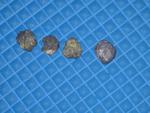Col. Batguano
75 Cal.
- Joined
- Feb 10, 2011
- Messages
- 5,039
- Reaction score
- 1,424
Remember what hydrostatic shock is all about. It's the creation of a temporary wound channel due to the incompressibility of the liquids in the tissues due to the velocity of the incoming foreign object. A bullet that mushrooms creates a big wide blunt object going through the medium than a bullet that retains a more streamlined shape, and thus, will disrupt more fluids in and around its' path. After the shock is gone, an elastic medium (like liquids) will return to re-fill the temporarily disrupted space, leaving behind only the direct path of the bullet as it plowed through the solid part of the tissue.
A visual depiction of it can be see with slo-mo's in ballistic gelatin, but also with bomb blasts from aerial bombs. It's a quick shock wave and then it's gone, but the (temporary) disruption is enough to rupture internal structures, like blood vessels. It's the principle behind why depth charges work against submarines. Yes, in that instance, close counts.
A visual depiction of it can be see with slo-mo's in ballistic gelatin, but also with bomb blasts from aerial bombs. It's a quick shock wave and then it's gone, but the (temporary) disruption is enough to rupture internal structures, like blood vessels. It's the principle behind why depth charges work against submarines. Yes, in that instance, close counts.
Last edited:








